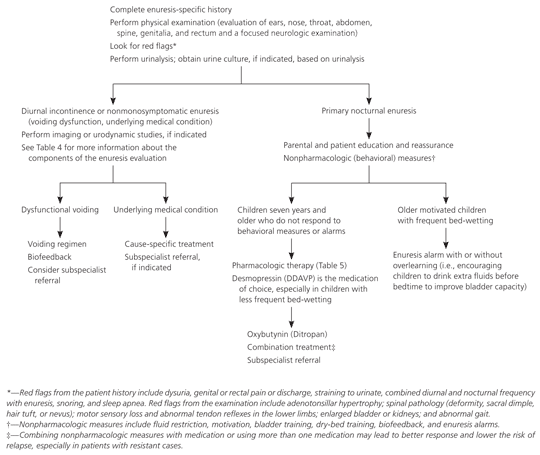The disposal of bodily waste is a basic function that is carried out instinctively from birth, in the first years of life begins a vast development that will lead the child from total dependence to full autonomy, in this evolutionary process, which usually extends to the Fourth or fifth year of life, the child must acquire a series of knowledge , which will eventually be consolidated as personal care habits, however, some problems, such as enuresis, may arise in this process.
Sphincter control usually follows a common sequence in most children: the first skill acquired is nocturnal fecal continence; i. e. controlling intestinal drainage during sleep; second, daytime fecal control is usually acquired; a short time later, daytime urinary continence is usually achieved. Finally, you get nightly urine control, which is usually the longest to get.
- Sex is a variable that also influences the age of sphincter control.
- Usually girls gain control before boys.
- This period can vary from a few months to 2 or 3 years.
- Despite this variability.
- It is normal for the control to start training after age 18.
- Months and be complete in 3 to 5 years.
- After these stages of development.
- A lack of urinary or fecal control is considered problematic.
Many children, from the age of 5, still pee while sleeping or during the day, which is a source of discomfort for children and parents.
Traditionally, enuresis is defined as an involuntary and persistent urine flow, which occurs during the day, night, or both, after 4 or 5 years, i. e. the term enuresis refers to repeated and involuntary urine emission in inappropriate places, such as bedding or clothing, in children over 5 years of age. At this age, the child should have acquired urinary control. Of course, as long as there is no pathology that motivates incontinence.
Nocturnal enuresis is one of the most common problems in children, because urination occurs during sleep; about 10% to 20% of 5-year-olds often have this problem at night.
Various hypotheses have been formulated to explain the origin of enuresis, but none of the variables studied could explain the phenomenon alone, so the most accepted hypothesis is multicausal etiology.
Multicausal etiology refers to the existence of several physiological, maturation, genetic and learning factors, the interaction of which would help explain, to a greater or lesser degree, each case of enuresis.
To achieve urinary control, the child must learn to identify the contractions of the deusor muscle as a sign that the bladder is full, so the child must go to the right place to urinate.
Normally, during the filling phase the bladder relaxes and the detrusor only contracts when it is completely full, however, some enuretics have shown high hyperactivity of the detrite that causes uncontrolled contractions before the bladder fills up.
This is why the child shows a strong need to urinate that can cause nighttime incontinence. Hyperactivity of detrithane during sleep may be responsible for approximately one-third of cases of nocturnal enuresis.
The existence of a familial factor in enuresis is a known fact. In about 75% of all bedwetting cases, there is a first-degree relative with a family history of bedwetting.
Similarly, several genes appear to be involved in nocturnal enuresis problems, however, the results are not entirely conclusive.
Voluntary urination control is a complex phenomenon that forces the child to acquire, sequentially, a number of specific skills:
If this sequence is not learned correctly, it will not be automated, so it will be difficult to move to the night period to gain control of night urination.
As we have seen above, the main symptom of enuresis is the release of urine, either involuntary or intentional, which occurs with a frequency of 2 episodes per week, over a period of at least 3 consecutive months.
Nocturnal enuresis causes clinically significant discomfort or important areas of social, academic, or other activity. In some children with nocturnal enuresis, there may be difficulty waking up and constipation.
There are several options for the treatment of enuresis, ranging from drug treatment to behavioral treatment. As for drug treatment, one of the most commonly used drugs is imipramine, a tricyclic antidepressant.
In recent years the use of imipramine has been replaced by desmopressin, an analogue of the antidiuretic hormone (vasopressin), which facilitates the reabsorption of water by the kidneys, resulting in a reduction in urine volume.
Compared to behavioral treatment, it can be said to be consolidated into psychological intervention. This treatment was developed based on three basic procedures: the alarm method, urine retention training and dry bed training.
For example, if one of your children suffers from enuresis, it’s best to see a specialist psychologist. Behavioral treatment is effective and side effects of medications can be avoided.
Bibliography
Comeche Vallejo, I. , Vallejo Pareja, M. A. Manuel of childhood driving therapy. Dykinson Psychology, Madrid, 2012.
Bragado Alvarez, C. Enuresis for children. Pyramid. Madrid, 2006.

